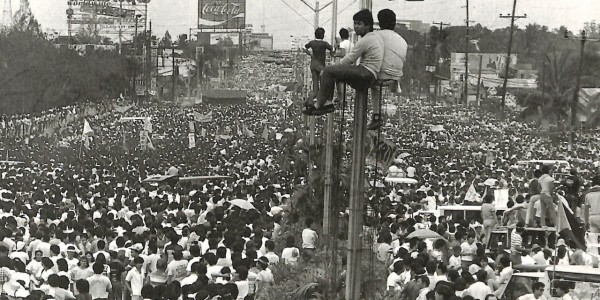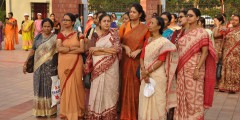Editor
View this author's profilePosts by Editor
The EDSA revolution at 30: what does it mean for the poor in Philippines 2016?
March 7, 2016
Written by Pauline Eadie. It has been 30 years since the EDSA People Power Revolution in the Philippines. Filipinos unified across the class spectrum to rid the Philippines of the Marcos family. Sectors of society that were traditionally at odds with each other such as the military, the church and the left overcame their differences …
Dangerous Freedoms: Some thoughts on Gender, Caste and Development in India
March 3, 2016
Written by Kalpana Karunakaran. Gender violence cannot exist on the scale it does in India unless there is endorsement and social sanction for it or at least for the conditions that breed violence against women. To understand better the idea of social sanction, I suggest we see gender violence, not only as the horrific acts of …
The Crises of Representation in the Philippines and the Role of Charter Change
March 2, 2016
Written by Aries A. Arugay. The Aquino Administration would like to believe that it has made strides in improving transparency and accountability. While there is empirical support for this, corruption is not the only gripping problem of Philippine democracy. There is also a need to improve government responsiveness, political inclusion, and popular participation. There is …
Democratic Dysfunction in the Philippines: “Pateros ” as a Microcosm
February 29, 2016
Written by Ernie R. Gonzales. Democracy run by patriotic democrats empowers the masses whom they represent, and facilitates the attainment of genuine justice, freedom, peace and progress. But kept in the hands of Kleptocrats, democracy becomes dysfunctional and pushes society into the depths of poverty, hunger and modern slavery. Social life becomes locked into systemic …
Philippines 2016: Democracy for the Bobotante
February 24, 2016
Written by Carmina Yu Untalan. Spend just 30 minutes reading commentaries on Philippine presidential elections online, and there is a 99 percent chance that you will come across the word bobotante. You may guess that it is a derogatory term from the context in which it appears: we have four candidates and each have weaknesses: …
Philippines 2016: We Need to Talk About Manny
February 22, 2016
Written by Pauline Eadie. Political aspirants in the Philippines routinely trot out religious piety, devotion to family and humble origins as mechanisms to appeal to the masses. These humble origins often turn out to be somewhat exaggerated as in the case of Manny Villar. If a claim to humble origins is simply not credible then a …
2016 Philippine Presidential Elections: Turning Point for Internal Conflicts?
February 17, 2016
Written by Joseph Franco. The 9th February 2016 marks the official start of 90-day campaign period for the Philippine presidential elections. Boisterous and even bordeline slanderous remarks are par for the course as with prior presidential races. Beyond the day-to-day flurry of campaigning lies potential turning points for the different internal conflicts raging across the …
What the Philippines 2016 Elections Mean for the Mindanao Peace Process
February 15, 2016
Written by Pauleen Gorospe. It has been decades since the armed conflict in Mindanao erupted. Almost 50 years later, the Government of the Philippines (GOP) was able to enter into peace agreements with two secessionist groups: in 1996, with the Moro National Liberation Front (MNLF) and, in 2014, with its breakaway group, the Moro Islamic …
Philippines 2016 at the Institute of Asia and Pacific Studies
February 8, 2016
Written by Pauline Eadie and Francis Domingo. Thirty years ago in February 1986 the Philippines saw a bloodless revolution that ousted President Ferdinand Marcos and his wife Imelda Marcos from Malacañang Palace. This revolution was known as the EDSA Revolution and the non-violent tactics of the masses became known as ‘People Power’. These events are embedded in the …
On Disasters and the Yolanda/Haiyan Experience
February 5, 2016
Written by Jan Robert R Go. Since 2000, natural disasters, it seems, have become a commonplace in the Philippines more than ever—not simply in terms of numbers, but also in terms of magnitude. Many studies and reports, both national and international, have already highlighted the geographical exposure of the Philippines, which makes it a disaster-prone …


